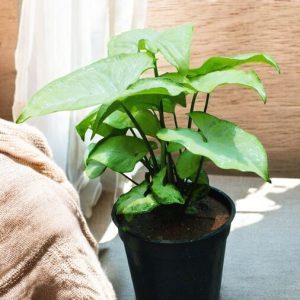Cuphea Pink
This product is available for shipping only in Bangalore
Cuphea Pink is a truly diverse genus of plant and many of these plants have impressive, uniquely shaped flowers. While false heather (Cuphea hyssopifolia) is probably the most well known type of Cuphea plant, the cigar plant or firecracker plant (Cuphea ignea) and the bat-faced cuphea (Cuphea llavea) are also popular varieties. These unusual names are often accompanied by equally unique flowers.
Plant Height: approx 8 inches including the pot
Pot size : 4 inches nursery pot
- Estimated Delivery : Up to 3 business days
- Free Shipping & Returns : On all orders over ₹550 in Bangalore
Cuphea Pink, also known as Cuphea llavea or bat-faced cuphea, is a vibrant, low-maintenance flowering plant known for its tubular, bright pink flowers that attract hummingbirds, butterflies, and other pollinators. It’s often used in borders, containers, or as a ground cover in warmer climates. The plant thrives in sunny locations and provides a colorful display throughout the growing season.
Here’s a complete care guide for Cuphea Pink:
1. Light Requirements
- Full Sun to Partial Shade: Cuphea thrives in full sun, producing more flowers when it receives plenty of sunlight. However, it can also tolerate partial shade, though flowering may be reduced.
2. Watering
- Moderate Watering: Cuphea prefers consistently moist but well-draining soil. Water the plant when the top inch of soil feels dry. Be sure not to overwater, as this can cause root rot.
- Drought Tolerant: Once established, Cuphea can tolerate short periods of drought, but it performs best with regular watering during the growing season.
3. Soil
- Well-Draining Soil: Cuphea thrives in well-drained soil with a slightly acidic to neutral pH (around 6.0-7.0). It can tolerate a variety of soil types, including sandy or loamy soils, as long as drainage is good.
4. Temperature and Humidity
- Warm Temperatures: Cuphea ‘Pink’ prefers warm temperatures and grows best in USDA zones 9-11. It can be grown as an annual in cooler climates, or brought indoors during winter months in containers.
- Humidity: Cuphea enjoys moderate to high humidity but is adaptable to a range of indoor and outdoor conditions.
5. Fertilizing
- Balanced Fertilizer: Use a balanced, slow-release fertilizer during the growing season (spring through summer) to encourage healthy growth and flowering. Fertilize every 4-6 weeks. Avoid over-fertilizing, as too much nitrogen can reduce blooming.
6. Pruning and Maintenance
- Deadheading: Regularly deadhead spent flowers to encourage continuous blooming and maintain a tidy appearance.
- Pruning: Light pruning may be needed to shape the plant or control its size. Cut back in early spring to promote fuller growth.
7. Pests and Diseases
- Resistant to Most Pests: Cuphea is generally resistant to pests and diseases. However, it may occasionally be affected by aphids or spider mites. Regularly inspect the plant and treat infestations with insecticidal soap or neem oil.
- Root Rot: Overwatering can lead to root rot, so ensure proper drainage in both containers and garden beds.
8. Propagation
- Cuttings: Cuphea can be propagated from cuttings taken in spring or summer. Cut a healthy stem below a leaf node, remove the lower leaves, and place the cutting in water or a well-draining potting mix until roots form.
9. Toxicity
- Non-Toxic: Cuphea is non-toxic to pets and humans, making it a safe choice for gardens with animals or children.
Conclusion
Cuphea Pink is a delightful, easy-to-grow plant that adds vibrant color to gardens or containers. Its tolerance to heat and ability to attract pollinators make it a great choice for sunny spots. With proper care, including adequate sunlight, moderate watering, and occasional pruning, this plant will reward you with a stunning display of pink flowers throughout the growing season.
** Plants photos are for representation purpose only. We will make best efforts to send the plants as in photos itself. There may be small white dots on the plant, as these plants cared in nursery using the hard water and pesticide spray. However these will eventually disappear as you take care and clean the leaves. Trust us, we want to give you the best














Reviews
There are no reviews yet.